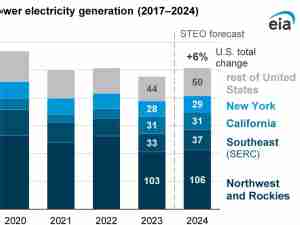Pemex Has Imported Exactly Zero Barrels of U.S. Crude Oil
By: Adam Williams | Aug 08 2016 at 05:22 PM | International Trade
Ten months after Mexico won special dispensation to import U.S. crude oil, it has yet to take in a single barrel.
Petroleos Mexicanos successfully petitioned the U.S. Commerce Department in October for permission to swap its own heavy oil for the lighter crude produced in shale formations. The effort was part of the state-owned oil company’s plan to increase fuel quality at its refineries, and came months before the government removed all prohibitions on U.S. oil exports.
But the oil hasn’t come, according to the latest reports from the U.S. Census Bureau and Mexico’s Energy Ministry. Pemex says it doesn’t make economic sense to bring in U.S. crude at current prices. Even if the potential for profits improves, though, the question remains whether Mexico’s infrastructure would be able to handle the imports and if its ailing refineries would be able to take it. Roberto Montes, Pemex’s operational manager for refining, said in an interview last year that the necessary infrastructure wasn’t in place to import U.S. crude by large tankers.
The aim to produce better-quality gasoline and diesel by blending Mexican heavy crude with U.S. light oil has run into a snag at a time when Pemex’s refineries are struggling with continued operating losses, reduced investment and frequent outages. Mexico, which for years requested supplies from the U.S., has had to cut 162 billion pesos ($8.7 billion) from Pemex’s budget in the past two years to weather an oil market rout, compromising the efficiency of units that would process the imported crude.
“It wouldn’t surprise me if the refineries were not in a condition to receive the shipments,” John Padilla, Managing Director of IPD Latin America, said in a phone interview. “The company is in a full-blown liquidity crisis, which means less and less money can be dedicated to refining and crude processing.”
Refining Woes
When Pemex received a license from the U.S. last October to import as much as 75,000 barrels a day in exchange for heavy Mexican crude, the state-owned producer said it would begin welcoming U.S. light oil to lower the sulfur content of its fuel. But Mexico’s six refineries are running at about 60 percent of capacity and had 35 unscheduled stoppages in the first quarter, prompting the country to boost fuel imports. The units have amassed annual losses of more than 100 billion pesos as refining fell last year to the lowest since at least 1990.
Pemex said it would reevaluate the purchases if potential margins improved and that the proper infrastructure is in place. The imports have been postponed because they would no longer be as profitable, the company said in an e-mailed response to questions. The producer is continuing to use its own light crude to mix with heavier oil, according to the statement.
‘Economic Attractiveness’
At the time of the approval of the U.S.-Mexico crude swap, replacing some local Maya oil with imported West Texas Intermediate would provide good returns, but the broader lifting of U.S. crude trade restrictions in December elevated WTI prices and diminished the potential profits from imports, Pemex said.
“Due to the reduction of its economic attractiveness, it was decided to postpone crude imports until the economic and operating conditions merit reconsideration,” Pemex said.
The import of U.S. light crude was deemed “very positive for our crude oil processing operations” and said to “generate additional value for the company,” Pemex Treasurer Rodolfo Campos said on the day of the announcement.
Since lifting the international trade limits on Dec. 18, the U.S. shipped its crude to 16 countries through May, including Colombia, Nicaragua, Panama and Peru in Latin America, according to 2016 data from the U.S. Census Bureau. WTI futures have gained more than $8, or about 24 percent, since then and is hovering around $43 a barrel.










